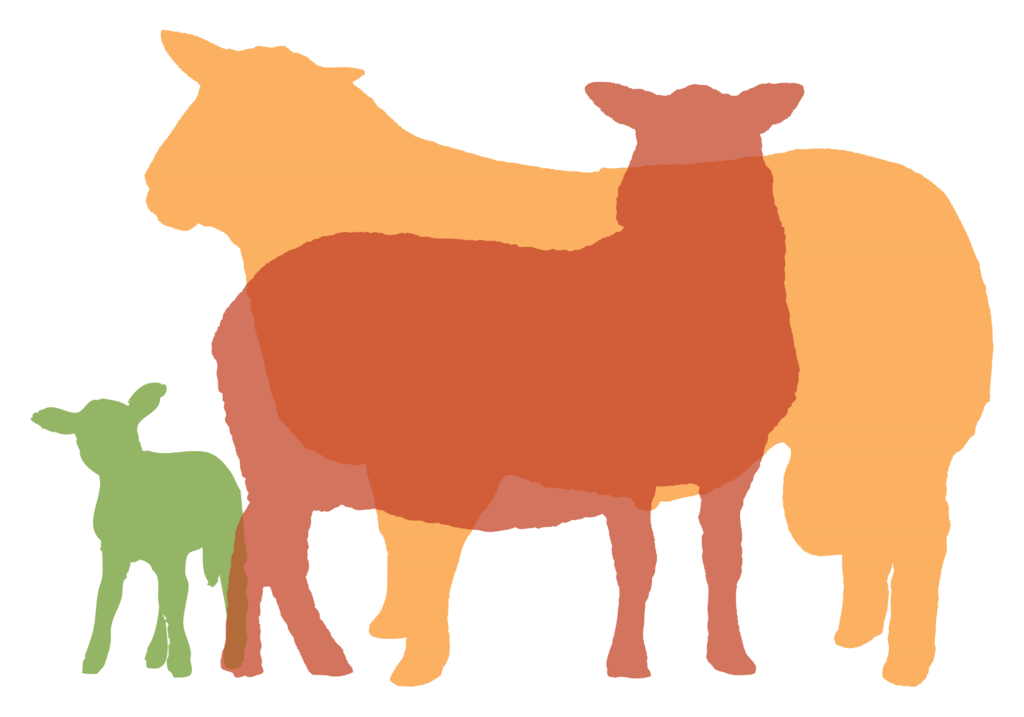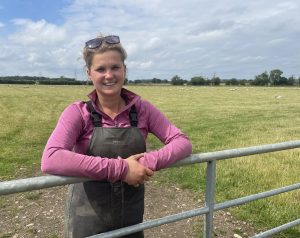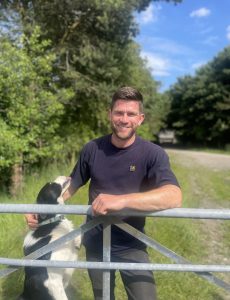Swapping a Continental terminal sire for the Primera is enabling Richard and Laila Carruthers to make huge strides forward in their quest to improve their sheep enterprise margins and in turn profitability. Their Primera cross lambs are finishing to average 19.5kg target weight up to 16 weeks faster, literally 100% are grading within the U and R bracket, and the entire crop is scheduled to be away finished by mid-September.

“These results are significant,” Richard explains. “We’ll no longer have to buy in expensive concentrate for finishing the Continental cross lambs in to the New Year. Grass is being freed early enabling us to winter the entire flock at home which will eliminate the winter tack bill. We’ve also just introduced rotational grazing, a system which has encouraged a visible increase in the amount of grass available. Added together these changes are enabling us to expand the flock to 1,000 ewes,” he says.
“We are trying to stay in business and falling support payments together with market volatility, and rising rents make it a big challenge. This is a traditional tenanted hill unit and we don’t have any form of buffer. We don’t have resources for diversification nor do we want to hide behind support payments. We knew that somehow we had to lift the unit’s profitability by stepping up output and reduce the general running costs.
“We did quite a bit of brainstorming with our accountant and industry specialists and came to the conclusion we had to move away from the traditional way of thinking, after all, the people who buy my end product are not interested in ear markings or coat colour, they’re solely looking for carcase value – weight and conformation, and we’re in business to produce what the market wants,” he says.
“We concluded that changing the flock’s genetics was the one thing we could manipulate. We had to move away from the traditional ram breeders making selection decisions on visual appraisal to a source which was using figures to select for the main performance traits.
“We’d heard word on the street about Innovis and its performance recorded genetics. We investigated, watched its sheep in neighbours’ flocks and decided to invest in the Primera, a terminal sire that had evolved from progeny tested stock in New Zealand. After one season we’ve decided the Primera is the tup for us. One tup covered 120 Texel cross Mule ewes no problem, he’s still alive and we expect he’ll cover the same number of ewes this coming season. We had no issues at lambing and we’re on course for 184% lambs reared.”
He adds: “Hundreds of farmers have convinced themselves using a Continental tup will achieve a better grading carcase and subsequently, higher margins. I was among them. However the return from that extra grade just doesn’t cover the additional input costs.
“As committed sheep producers competing on the world stage, I now believe its catch up time with New Zealand. We’ve found here’s an opportunity to leap frog to their genetics with the Primera which combined with rotational grazing, is certainly proving to deliver reduced costs and better efficiency which means more profit.”



